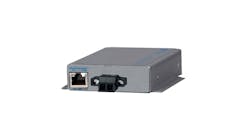Frank was among a minority of plant maintenance supervisors, who had a large installed base of fieldbus devices, predominantly Foundation Fieldbus. Proficiency in fieldbus was vanishing from his company and suppliers due to retirements and reassignment to current marketing hype. There was also increasing attrition among his decades-old instruments, many of which were in service and under power for that entire period.
Frank had a few technicians, who were trained and knew the procedure for replacing one device with another that was one or more generations beyond. Some nuances needed engineering—such as when control function blocks from early generations needed to be reconfigured with more recent options. However, fieldbus looked like it was going the way of pneumatics because fewer and fewer individuals knew how to help with troubleshooting and repairing it.
Get your subscription to Control's tri-weekly newsletter.
All migrations are costly and typically have zero payout—obsolescence avoidance could arguably make the plant more reliable, but the chances of citing likely economic impacts wouldn’t finance the infrastructure change. One of Frank’s manufacturing reps thought he could revert to 4-20 mA/HART devices. That was challenging to accommodate on a one-by-one basis since there were not nearly enough twisted-pair cables in the field to bring in more than a few dozen devices.
Remote I/O is expensive, and requires complicated and worrisome power strategies to match Foundation Fieldbus' two-wire power redundancy. What would he need at the system side to bring in remote I/O, and did he have room for additional cards? It would have to be good for hazardous areas, and he would be gambling on whether his old cable would be adequate for the remote I/O backhaul.
Frank might be intrigued now if he became aware of an effort by the FieldComm Group to describe a concept for migrating Foundation Fieldbus H1 via the emerging (but far from mainstream) Ethernet Advanced Physical Layer (APL). APL is two-wire Ethernet with power that can be deployed in hazardous areas.
"Remote I/O is expensive, and requires complicated and worrisome power strategies to match Foundation Fieldbus’ two-wire power redundancy."
Roughly a decade ago, the Fieldbus Foundation merged with the HART Communications Foundation to form the FieldComm Group, and it's been a leading organization developing standards for new field communications. The founding members are the same that were devoted to developing and marketing fieldbus, though the players have changed. If you’ve been a subscriber to the fieldbus vision—digital integration of field devices over a twisted-pair bus—you might feel like these technology providers had an obligation to define a way forward.
Foundation Fieldbus H1 was originally conceived to have H2, and later morphed into high-speed Ethernet (HSE). H2/HSE bridged the H1 networks together, and transparently supports the fieldbus protocol. But incarnations of this architecture were scarce, and it didn’t win supporting DCSs many projects. Instead, proprietary remote I/O supporting legacy, point-to-point wiring became the solution-du-jour thanks largely to support from “big oil” and speedy adoption by EPC firms. At the end of the day, suppliers must sell their wares—it’s how they achieve positive cash flow. This cruel but inexorable equation is why support for Foundation Fieldbus isn’t abundantly promoted in any supplier’s portfolio; it was outshone by simpler technology in proportion to the cost of manufacturing, marketing and support.
It's encouraging that FieldComm Group has invested the time and resources to publish its TR10365 concept for migrating the installed base of fieldbus devices. So I’ll continue next month imagining what sort of choices we’ll be making, and how to justify testing and investing in new concepts.





